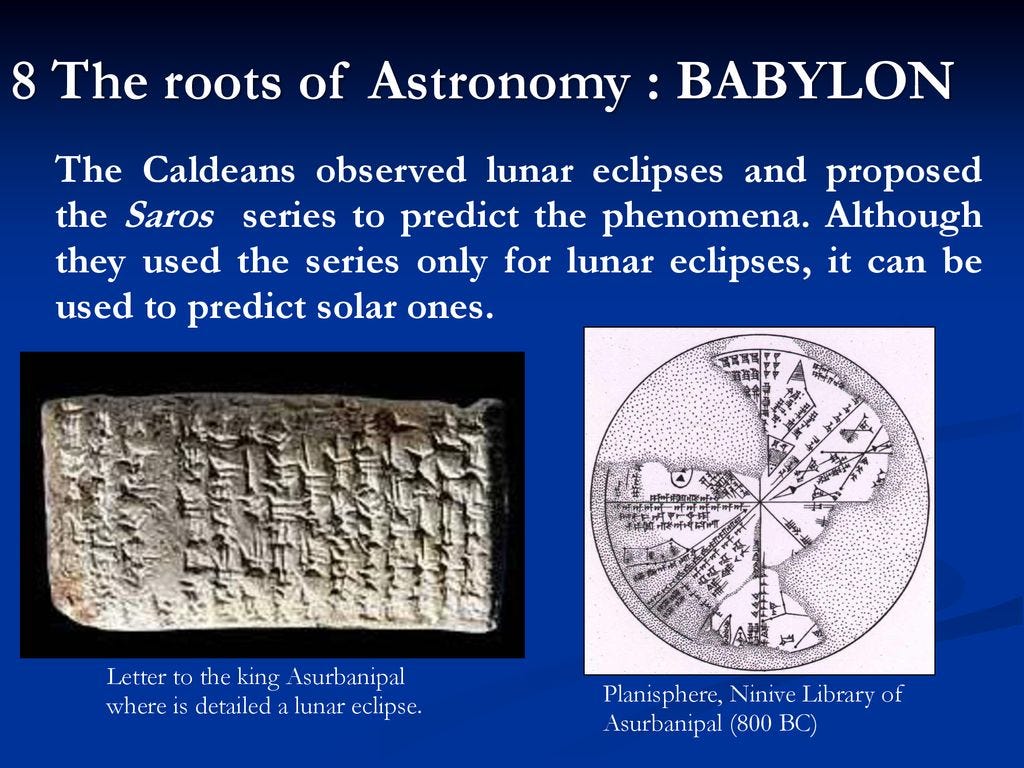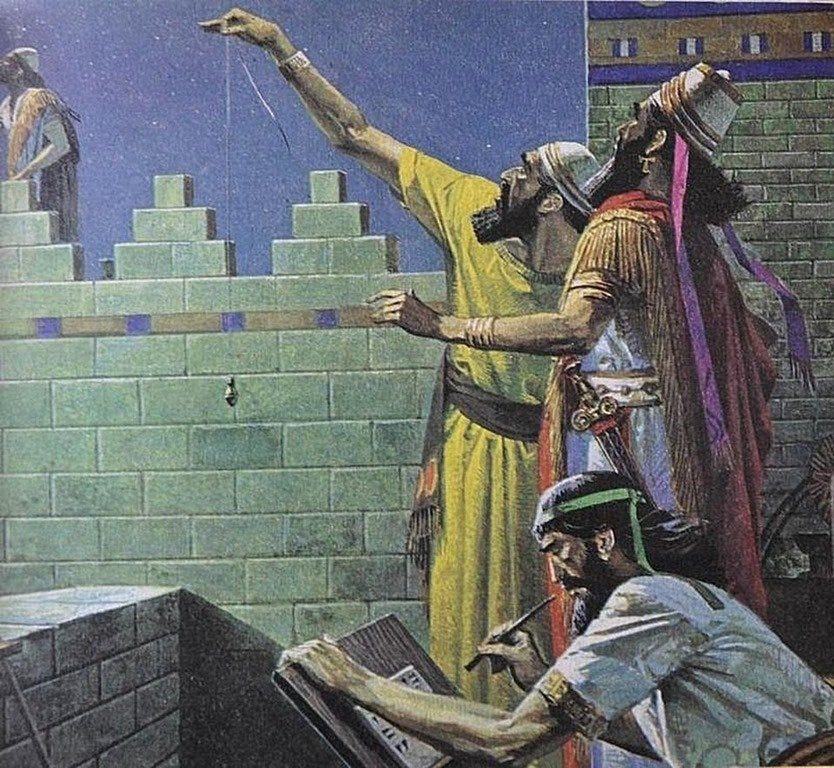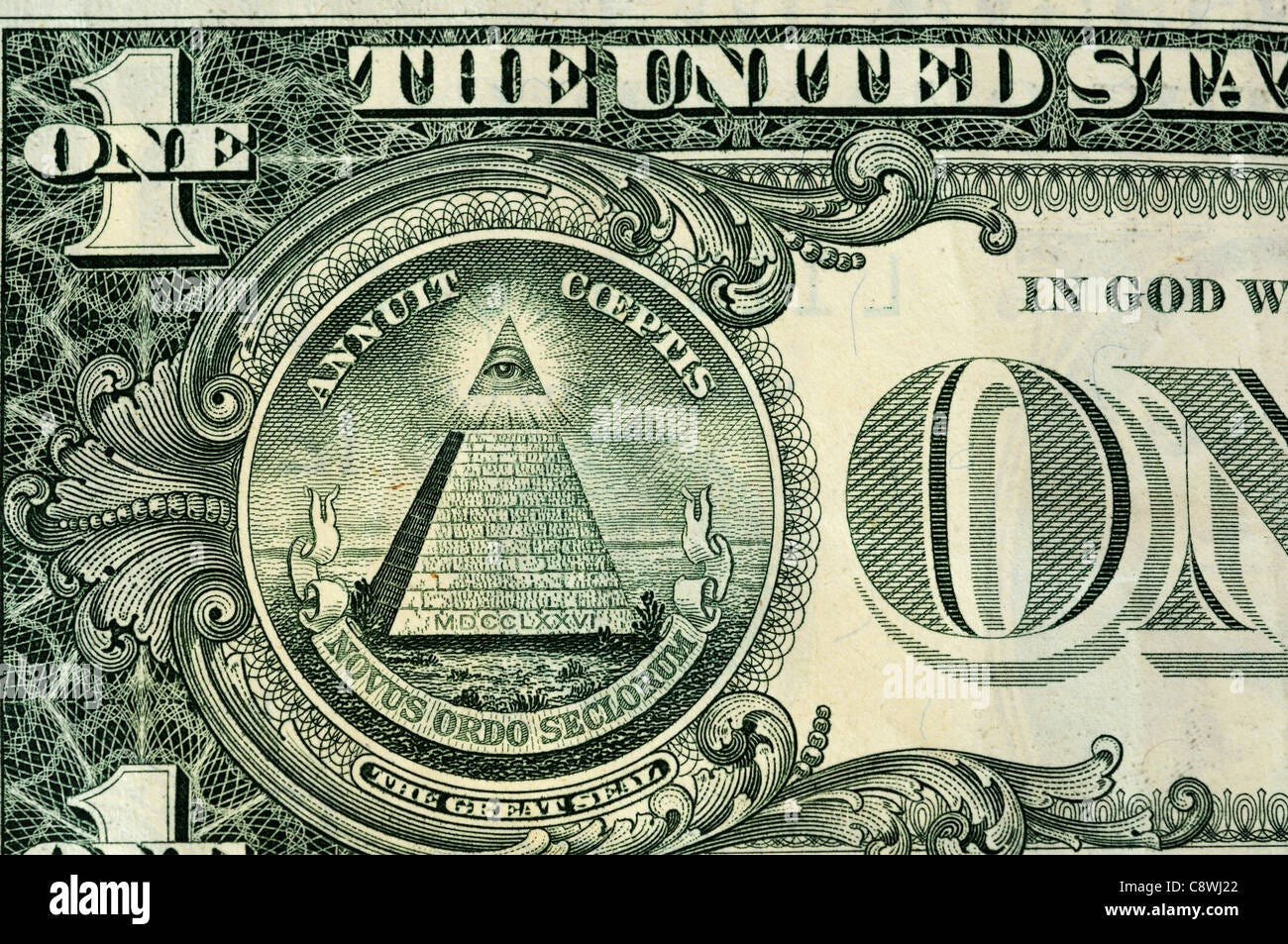Part 3 of Today appears to be the year 1025 A.D.
hiding the natural world and history by messing with the calendars
Click button above to read my stories from the beginning
To continue this Post about being led away from Nature’s rhythms and following natural cycles to organize our lives, I will start with some rhythms that may make some sense, which are based on some quirks of mathematics.
This one does not make sense
THE DIVISION of the hour into 60 minutes and of the minute into 60 seconds comes from the Babylonians who used a sexagesimal (counting in 60s) system for mathematics and astronomy. They derived their number system from the Sumerians who were using it as early as 3500 BC. The use of 12 subdivisions for day and night, with 60 for hours and minutes, turns out to be much more useful than (say) 10 and 100 if you want to avoid having to use complicated notations for parts of a day.
Twelve is divisible by two, three, four, six and 12 itself - whereas 10 has only three dividers - whole numbers that divide it a whole number of times. Sixty has 12 dividers and because 60 = 5 x 12 it combines the advantages of both 10 and 12. In fact both 12 and 60 share the property that they have more dividers than any number smaller than themselves. This doesn't, of course, explain how this quirk of mathematics spread throughout the world. Here is another explanation involving looking up at what I call the sky clock.
Astronomers in Babylon were using Saros cycles (eclipse occurrences) by the late seventh century BC. They only needed a lunar calendar to keep track of them, but for more sophisticated work on the moon and planets they needed a steady, non-lunar calendar. So they adopted an old idea, once used during the third millennium BC, for an administrative calendar: 12 months of 30 days in a year, making a 360-day cycle. This ‘ideal calendar’ reappears in the second millennium BC in the Babylonian Seven Tablets of Creation, which states that the god Marduk “set up three stars each for the 12 months.” These triplets of stars corresponded to 12 divisions of the ecliptic, one for each ideal month of 30 days, but it was an idealized calendar not used in everyday life.
The 12 equal divisions for a year also applied for the day from sundown to sunrise, divided into 12 beru. For example, in the Epic of Gilgamesh — written during the second millennium BC — our hero races the sun in Book IX and we are told how he progresses at each beru, eventually coming out just ahead. As with the ideal month, a beru was split into 30 equal sections called uš, giving 360 uš in a 24-hour period. Each was therefore four minutes in modern terms. Fractions of an uš were also used: for example in the astronomical diaries we find an instance where the first appearance of the moon was visible for 3 ¾ quarters of an uš (15 minutes).
An accurate recording of time was important for these diaries and so were the positions of the moon and planets. During the fifth century BC, a scheme was developed that could be broken down into fine detail: the ecliptic was divided into 12 equal sections, each split into 30 finer divisions (also called uš), yielding 360 uš in total. For finer accuracy an uš was broken down into 60 divisions. Each of the 12 sections they labelled by a constellation of stars and, when the Greeks took on Babylonian results, they preserved these constellations, but gave them Greek names — Gemini, Cancer and Leo — most of which had the same meanings as in Babylonia.
What explains how this spread throughout the world, is that the Egyptians were very strong believers in the occult idea of Numerology, giving it even divine significance. The Freemasons of today, who are Egyptians in disguise, to this day have a strong interest of Egyptian culture.
Both the ancient Egyptian culture, and the Freemasons put significance on the number 666. This number was added to the bible when it was re-written by the Romans, as a symbol of their demon god.
Here is the official sequence of civilizations from what I could find.
Babylonians > Egyptians (not the pyramids builders) > Greeks > Romans
Freemason ideas are often quoted as having originated with the Greeks and their geometry, I think it goes back much further than that, all the way to the death and child sacrifice cults.
As Greek geometry developed, it created the concept of an angle as a magnitude — for example, adding the angles of a triangle yields the same as two right angles — but in Euclid’s Elements (c. 300 BC) there is no unit of measurement apart from the right angle. Then, in the second century BC, the Greek astronomer Hipparchos of Rhodes began applying geometry to Babylonian astronomy. He needed a method of measuring angles and naturally followed the Babylonian division of the ecliptic into 360 degrees, dividing the circle the same way. So, although angles come from the Greeks, the 360 degrees come from Babylonian astronomy.
Interestingly the degree was divided into 60 arc-minutes, and each arc-minute into 60 arc-seconds.
So what does this all mean? Well, all the above appeared to come from ‘looking up at the sky’.
When it comes to the number of days in a week, and weeks in a month, it seems we have the Babylonians to thank again. For them, the number ‘7’ held a particular significance, observing as keen astronomers, that there were seven celestial bodies in sky – the Sun, the Moon, Mercury, Venus, Mars, Jupiter and Saturn. Through their lunar calendar, which tracked the transitional phases of the moon, they also calculated that it took approximately 28 days for the moon to complete its full lunar cycle.
Many of the names of the week used by them are still in use today. It helps to know a number of languages, so here it goes. The Babylonians believed, like many cultures after them, that the 7 celestial bodies in the sky were depictions of their gods.
The Sun became Sunday, in german Sontag
The Moon became Monday, in german Montag (Mond=moon), in spanish Lunes (luna=moon)
Mercury became the spanish Mercurio sounding similar to Miercoles (Wednesday in english)
Mars became the spanish Marte=Martes (Tuesday in English)
Saturn became Saturday but in the other 2 languages indicates prayer
Thursday lost that connection referring to a Norse god
Friday lost that connection referring to freedom
These 7 days above divided into the lunar month by 4 and that’s where the week came from, 4 cycles of 7 days every month.
Another time division we’re familiar with is the division of the year into months. Many ancient cultures followed a lunar-based calendar, incorporating 13 months. The Islamic community (for Ramadan and other events), the Jewish community (for holidays like Passover), and some East Asian cultures (for festivals like the Lunar New Year), still follow a lunar calendar today.
Natural cycles that follow the lunar month include tidal patterns, certain animal behaviours (like breeding and migration), menstrual cycles and some agricultural practices.
There are so many reasons for having a 28 day long lunar month that it doesn’t make sense to have a 12 month year.
This now ties back to Part 1 of this series, where they added a 1000 years to our timeline. The 12-month calendar, known as the Gregorian calendar, was introduced by Pope Gregory XIII in 1582, which may have been 582.
So obfuscation piled on obfuscation. Again, what are ‘they’ trying to hide?
September = 7th month of the year not the 9th
October = 8th month of the year not the 10th
November = 9th month of the year not the 11th
December = 10 month of the year not the 12th
that makes January the 11th month
that makes February the 12th month
that makes March the 13th month
that makes April the 1st month - Spring the renewal
that makes May the 2nd month
that makes June the 3rd month
that makes July the 5th month
that makes August the 6th month
There is one month missing between June < > July. I propose we add it there. Maybe call it Sol because it occurs around the Summer Solstice when the Sun is at its peak.
A 13 month calendar of 28 days each, adds to 364 days per year. We can add this missing day to represent the summer solstice without any attachment to any month. It would stand on its own as a celebration. And every 4 years we add a second day to this solstice celebration.
Thousands of years ago people were able to create accurate depictions of time, as well as build machines to depict and calculate this. And somehow we are unable to do this today? And somehow they had to throw another wrench into this time machine, the sky clock.
A different kind of time machine
They added daylight savings time, for no good reason whatsoever. Think about this. Things happen for a reason. Their reason not ours.
If you’re getting this by e-mail click button above to read the more useful version on my original Substack page. There is no need to subscribe, but you can if you wish to keep receiving posts by e-mail.












Roland, Please keep your information-packed and thought-provoking posts coming!